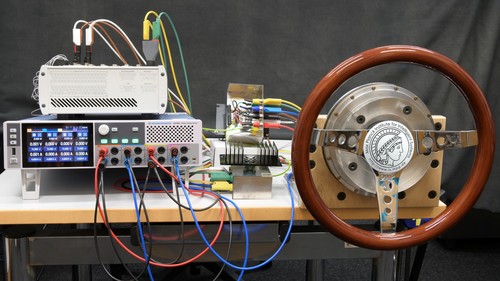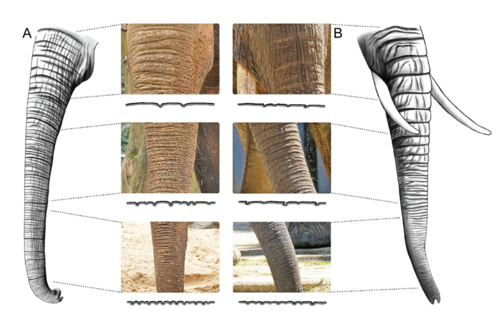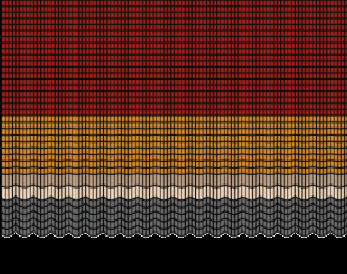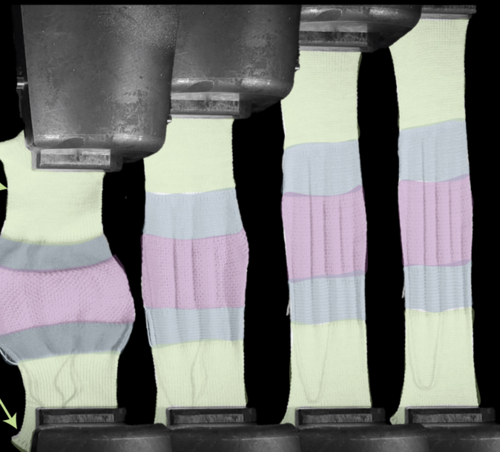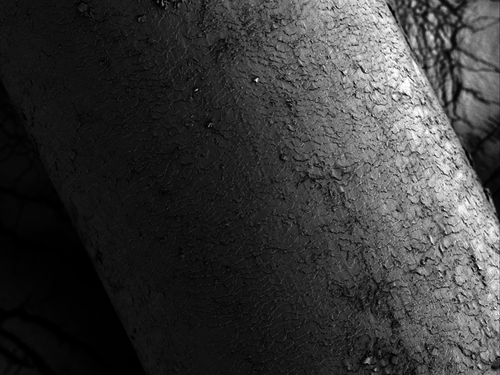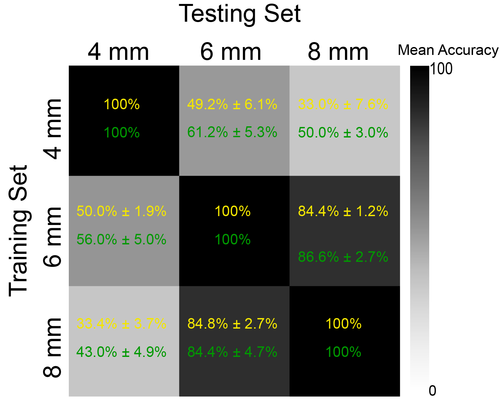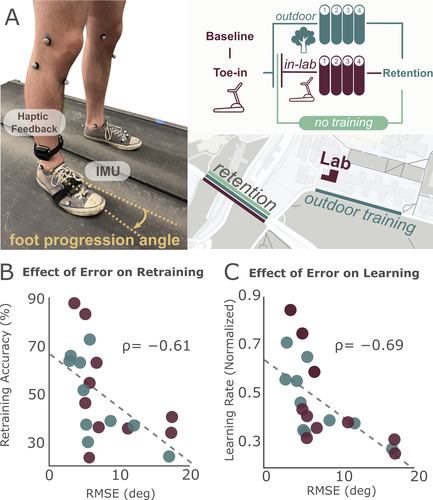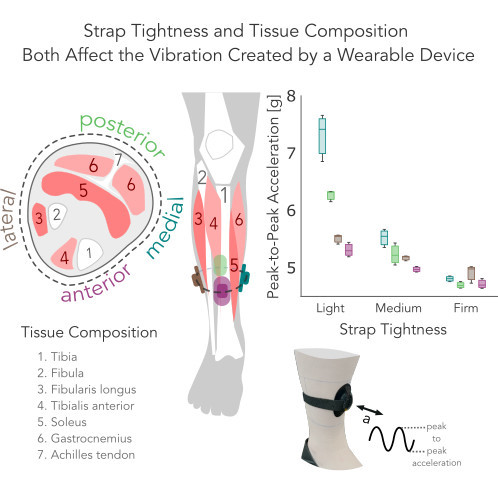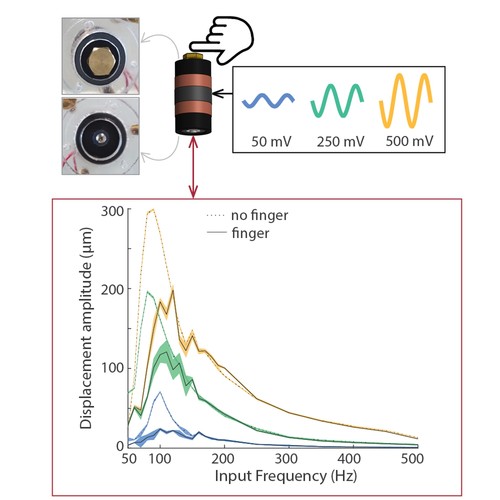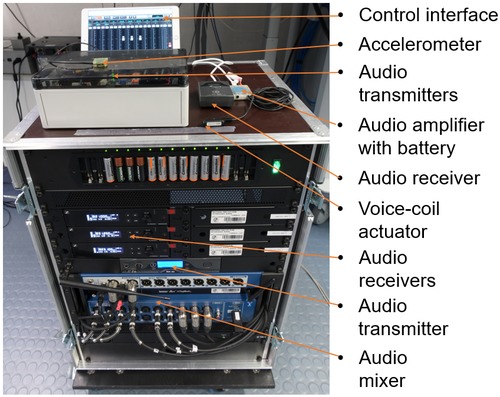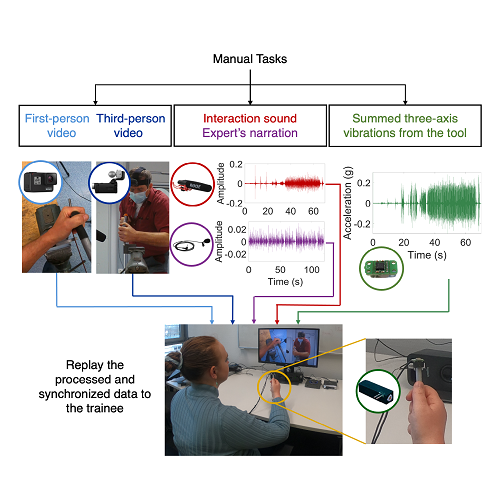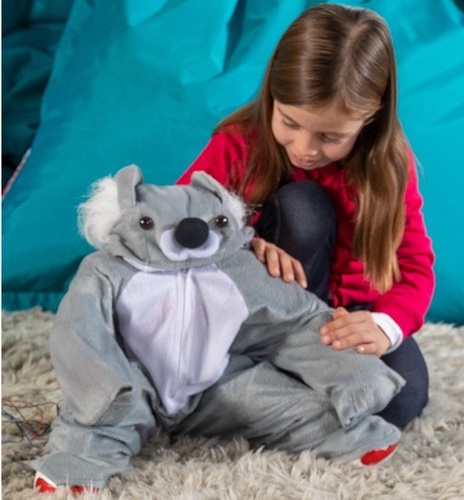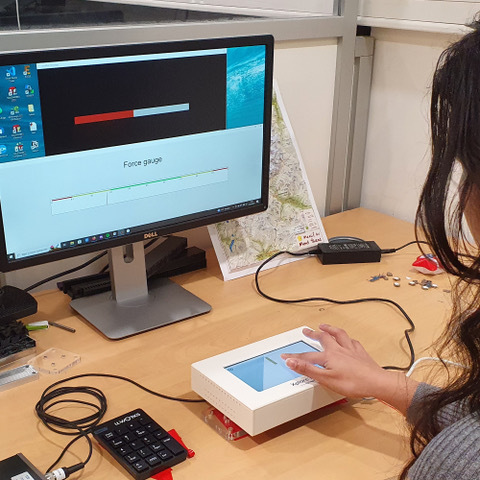2024
hi
Mohan, M., Kuchenbecker, K. J.
Demonstration: OCRA - A Kinematic Retargeting Algorithm for Expressive Whole-Arm Teleoperation
Hands-on demonstration presented at the Conference on Robot Learning (CoRL), Munich, Germany, November 2024 (misc) Accepted
al
hi
ei
Andrussow, I., Sun, H., Martius, G., Kuchenbecker, K. J.
Demonstration: Minsight - A Soft Vision-Based Tactile Sensor for Robotic Fingertips
Hands-on demonstration presented at the Conference on Robot Learning (CoRL), Munich, Germany, November 2024 (misc) Accepted
hi
Bartels, J. U., Sanchez-Tamayo, N., Sedlmair, M., Kuchenbecker, K. J.
Active Haptic Feedback for a Virtual Wrist-Anchored User Interface
Hands-on demonstration presented at the ACM Symposium on User Interface Software and Technology (UIST), Pittsburgh, USA, October 2024 (misc) Accepted
hi
Rokhmanova, N., Martus, J., Faulkner, R., Fiene, J., Kuchenbecker, K. J.
Modeling Shank Tissue Properties and Quantifying Body Composition with a Wearable Actuator-Accelerometer Set
Extended abstract (1 page) presented at the American Society of Biomechanics Annual Meeting (ASB), Madison, USA, August 2024 (misc)
hi
Schulz, A., Serhat, G., Kuchenbecker, K. J.
Adapting a High-Fidelity Simulation of Human Skin for Comparative Touch Sensing
Extended abstract (1 page) presented at the American Society of Biomechanics Annual Meeting (ASB), Madison, USA, August 2024 (misc)
hi
Matthew, V., Simancek, R. E., Telepo, E., Machesky, J., Willman, H., Ismail, A. B., Schulz, A. K.
Empowering Change: The Role of Student Changemakers in Advancing Sustainability within Engineering Education
Proceedings of the American Society of Engineering Education (ASEE), June 2024, Victoria Matthew and Andrew K. Schulz contributed equally to this publication. (issue) In press
hi
Lev, H. K., Sharon, Y., Geftler, A., Nisky, I.
Errors in Long-Term Robotic Surgical Training
Work-in-progress paper (3 pages) presented at the EuroHaptics Conference, Lille, France, June 2024 (misc)
hi
zwe-rob
Rokhmanova, N., Martus, J., Faulkner, R., Fiene, J., Kuchenbecker, K. J.
GaitGuide: A Wearable Device for Vibrotactile Motion Guidance
Workshop paper (3 pages) presented at the ICRA Workshop on Advancing Wearable Devices and Applications Through Novel Design, Sensing, Actuation, and AI, Yokohama, Japan, May 2024 (misc)
hi
Sundaram, V. H., Smith, L., Turin, Z., Rentschler, M. E., Welker, C. G.
Three-Dimensional Surface Reconstruction of a Soft System via Distributed Magnetic Sensing
Workshop paper (3 pages) presented at the ICRA Workshop on Advancing Wearable Devices and Applications Through Novel Design, Sensing, Actuation, and AI, Yokohama, Japan, May 2024 (misc)
hi
Javot, B., Nguyen, V. H., Ballardini, G., Kuchenbecker, K. J.
CAPT Motor: A Strong Direct-Drive Rotary Haptic Interface
Hands-on demonstration presented at the IEEE Haptics Symposium, Long Beach, USA, April 2024 (misc)
hi
Fazlollahi, F., Seifi, H., Ballardini, G., Taghizadeh, Z., Schulz, A., MacLean, K. E., Kuchenbecker, K. J.
Quantifying Haptic Quality: External Measurements Match Expert Assessments of Stiffness Rendering Across Devices
Work-in-progress paper (2 pages) presented at the IEEE Haptics Symposium, Long Beach, USA, April 2024 (misc)
hi
rm
Sanchez-Tamayo, N., Yoder, Z., Ballardini, G., Rothemund, P., Keplinger, C., Kuchenbecker, K. J.
Cutaneous Electrohydraulic (CUTE) Wearable Devices for Multimodal Haptic Feedback
Extended abstract (1 page) presented at the IEEE RoboSoft Workshop on Multimodal Soft Robots for Multifunctional Manipulation, Locomotion, and Human-Machine Interaction, San Diego, USA, April 2024 (misc)
hi
rm
Sanchez-Tamayo, N., Yoder, Z., Ballardini, G., Rothemund, P., Keplinger, C., Kuchenbecker, K. J.
Cutaneous Electrohydraulic Wearable Devices for Expressive and Salient Haptic Feedback
Hands-on demonstration presented at the IEEE Haptics Symposium, Long Beach, USA, April 2024 (misc)
hi
rm
Sanchez-Tamayo, N., Yoder, Z., Ballardini, G., Rothemund, P., Keplinger, C., Kuchenbecker, K. J.
Demonstration: Cutaneous Electrohydraulic (CUTE) Wearable Devices for Expressive and Salient Haptic Feedback
Hands-on demonstration presented at the IEEE RoboSoft Conference, San Diego, USA, April 2024 (misc)
ei
Besserve, M., Safavi, S., Schölkopf, B., Logothetis, N.
LFP transient events in macaque subcortical areas reveal network coordination across scales and structures: a simultaneous fMRI-electrophysiology study
Computational and Systems Neuroscience Meeting (COSYNE), March 2024 (poster)
ei
Rahaman, N., Weiss, M., Wüthrich, M., Bengio, Y., Li, E., Pal, C., Schölkopf, B.
Language Models Can Reduce Asymmetry in Information Markets
arXiv:2403.14443, March 2024, Published as: Redesigning Information Markets in the Era of Language Models, Conference on Language Modeling (COLM) (techreport)
ei
Shao, K., Xu, Y., Logothetis, N., Shen, Z., Besserve, M.
Koopman Spectral Analysis Uncovers the Temporal Structure of Spontaneous Neural Events
Computational and Systems Neuroscience Meeting (COSYNE), March 2024 (poster)
ei
Ortu, F.
Interpreting How Large Language Models Handle Facts and Counterfactuals through Mechanistic Interpretability
University of Trieste, Italy, March 2024 (mastersthesis)
hi
Kaufmann, L., Schulz, A., Reveyaz, N., Ritter, C., Hildebrandt, T., Brecht, M.
Elephants develop wrinkles through both form and function
Society of Integrative and Comparative Biology, Seattle, USA, January 2024 (misc) Accepted
hi
Schulz, A., Serhat, G., Kuchenbecker, K. J.
Adapting a High-Fidelity Simulation of Human Skin for Comparative Touch Sensing in the Elephant Trunk
Abstract presented at the Society for Integrative and Comparative Biology Annual Meeting (SICB), Seattle, USA, January 2024 (misc)
hi
Singal, K., Schulz, A., Dimitriyev, M., Matsumoto, E.
Simplifying the Wrinkled Complexity of Elephant Trunks using Knitted Biomimicry
Society of Integrative and Comparative Biology, Seattle, USA, January 2024 (misc) Accepted
hi
Shriver, C., Schulz, A., Scott, D., Elgart, J., Mendelson, J., Hu, D., Chang, Y.
Defining Mammalian Climbing Gaits and their influence criteria including morphology and mechanics
Society of Integrative and Comparative Biology, Seattle, USA, January 2024 (misc) Accepted
hi
Sordilla, S., Schulz, A., Hu, D., Higgins, C.
Collagen entanglement in elephant skin gives way to strain-stiffening mechanisms
Society of Integrative and Comparative Biology, Seattle, USA, January 2024 (misc) Accepted
hi
Khojasteh, B., Shao, Y., Kuchenbecker, K. J.
MPI-10: Haptic-Auditory Measurements from Tool-Surface Interactions
Dataset published as a companion to the journal article "Robust Surface Recognition with the Maximum Mean Discrepancy: Degrading Haptic-Auditory Signals through Bandwidth and Noise" in IEEE Transactions on Haptics, January 2024 (misc)
zwe-csfm
hi
Schulz, A., Kaufmann, L., Brecht, M., Richter, G., Kuchenbecker, K. J.
Whiskers That Don’t Whisk: Unique Structure From the Absence of Actuation in Elephant Whiskers
Abstract presented at the Society for Integrative and Comparative Biology Annual Meeting (SICB), Seattle, USA, January 2024 (misc)
ei
Bonse, M. J., Gebhard, T. D., Dannert, F. A., Absil, O., Cantalloube, F., Christiaens, V., Cugno, G., Garvin, E. O., Hayoz, J., Kasper, M., Matthews, E., Schölkopf, B., Quanz, S. P.
Use the 4S (Signal-Safe Speckle Subtraction): Explainable Machine Learning reveals the Giant Exoplanet AF Lep b in High-Contrast Imaging Data from 2011
2024 (misc) Submitted
ev
Achterhold, J., Guttikonda, S., Kreber, J. U., Li, H., Stueckler, J.
Learning a Terrain- and Robot-Aware Dynamics Model for Autonomous Mobile Robot Navigation
CoRR abs/2409.11452, 2024, Preprint submitted to Robotics and Autonomous Systems Journal. https://arxiv.org/abs/2409.11452 (techreport) Submitted
lds
Eberhard, O., Vernade, C., Muehlebach, M.
A Pontryagin Perspective on Reinforcement Learning
Max Planck Institute for Intelligent Systems, 2024 (techreport)
lds
Er, D., Trimpe, S., Muehlebach, M.
Distributed Event-Based Learning via ADMM
Max Planck Institute for Intelligent Systems, 2024 (techreport)
ev
Baumeister, F., Mack, L., Stueckler, J.
Incremental Few-Shot Adaptation for Non-Prehensile Object Manipulation using Parallelizable Physics Simulators
CoRR abs/2409.13228, CoRR, 2024, Submitted to IEEE International Conference on Robotics and Automation (ICRA) 2025 (techreport) Submitted
hi
Landin, N., Romano, J. M., McMahan, W., Kuchenbecker, K. J.
Discrete Fourier Transform Three-to-One (DFT321): Code
MATLAB code of discrete fourier transform three-to-one (DFT321), 2024 (misc)
ei
Rajendran, G., Buchholz, S., Aragam, B., Schölkopf, B., Ravikumar, P.
Learning Interpretable Concepts: Unifying Causal Representation Learning and Foundation Models
2024 (misc)
2023
ei
Sakenyte, U.
Denoising Representation Learning for Causal Discovery
Université de Genèva, Switzerland, December 2023, external supervision (mastersthesis)
ei
Jenny, D.
Navigating the Ocean of Biases: Political Bias Attribution in Language Models via Causal Structures
ETH Zurich, Switzerland, November 2023, external supervision (thesis)
hi
Khojasteh, B., Shao, Y., Kuchenbecker, K. J.
Seeking Causal, Invariant, Structures with Kernel Mean Embeddings in Haptic-Auditory Data from Tool-Surface Interaction
Workshop paper (4 pages) presented at the IROS Workshop on Causality for Robotics: Answering the Question of Why, Detroit, USA, October 2023 (misc)
ei
Kofler, A.
Efficient Sampling from Differentiable Matrix Elements
Technical University of Munich, Germany, September 2023 (mastersthesis)
hi
Garrofé, G., Schoeffmann, C., Zangl, H., Kuchenbecker, K. J., Lee, H.
NearContact: Accurate Human Detection using Tomographic Proximity and Contact Sensing with Cross-Modal Attention
Extended abstract (4 pages) presented at the International Workshop on Human-Friendly Robotics (HFR), Munich, Germany, September 2023 (misc)
hi
Rokhmanova, N., Pearl, O., Kuchenbecker, K. J., Halilaj, E.
The Role of Kinematics Estimation Accuracy in Learning with Wearable Haptics
Abstract (1 page) presented at the American Society of Biomechanics Annual Meeting (ASB), Knoxville, USA, August 2023 (misc)
hi
Rokhmanova, N., Faulkner, R., Martus, J., Fiene, J., Kuchenbecker, K. J.
Strap Tightness and Tissue Composition Both Affect the Vibration Created by a Wearable Device
Work-in-progress paper (1 page) presented at the IEEE World Haptics Conference (WHC), Delft, The Netherlands, July 2023 (misc)
hi
Ballardini, G., Kuchenbecker, K. J.
Toward a Device for Reliable Evaluation of Vibrotactile Perception
Work-in-progress paper (1 page) presented at the IEEE World Haptics Conference (WHC), Delft, The Netherlands, July 2023 (misc)
hi
Khojasteh, B., Solowjow, F., Trimpe, S., Kuchenbecker, K. J.
Multimodal Multi-User Surface Recognition with the Kernel Two-Sample Test: Code
Code published as a companion to the journal article "Multimodal Multi-User Surface Recognition with the Kernel Two-Sample Test" in IEEE Transactions on Automation Science and Engineering, July 2023 (misc)
hi
Fazlollahi, F., Taghizadeh, Z., Kuchenbecker, K. J.
Improving Haptic Rendering Quality by Measuring and Compensating for Undesired Forces
Work-in-progress paper (1 page) presented at the IEEE World Haptics Conference (WHC), Delft, The Netherlands, July 2023 (misc)
hi
Khojasteh, B., Shao, Y., Kuchenbecker, K. J.
Capturing Rich Auditory-Haptic Contact Data for Surface Recognition
Work-in-progress paper (1 page) presented at the IEEE World Haptics Conference (WHC), Delft, The Netherlands, July 2023 (misc)
hi
Gong, Y., Javot, B., Lauer, A. P. R., Sawodny, O., Kuchenbecker, K. J.
AiroTouch: Naturalistic Vibrotactile Feedback for Telerobotic Construction
Hands-on demonstration presented at the IEEE World Haptics Conference, Delft, The Netherlands, July 2023 (misc)
hi
Javot, B., Nguyen, V. H., Ballardini, G., Kuchenbecker, K. J.
CAPT Motor: A Strong Direct-Drive Haptic Interface
Hands-on demonstration presented at the IEEE World Haptics Conference, Delft, The Netherlands, July 2023 (misc)
hi
Gourishetti, R., Javot, B., Kuchenbecker, K. J.
Can Recording Expert Demonstrations with Tool Vibrations Facilitate Teaching of Manual Skills?
Work-in-progress paper (1 page) presented at the IEEE World Haptics Conference (WHC), Delft, The Netherlands, July 2023 (misc)
hi
Burns, R. B.
Creating a Haptic Empathetic Robot Animal for Children with Autism
Workshop paper (4 pages) presented at the RSS Pioneers Workshop, Daegu, South Korea, July 2023 (misc)
hi
Gueorguiev, D., Rohou–Claquin, B., Kuchenbecker, K. J.
The Influence of Amplitude and Sharpness on the Perceived Intensity of Isoenergetic Ultrasonic Signals
Work-in-progress paper (1 page) presented at the IEEE World Haptics Conference (WHC), Delft, The Netherlands, July 2023 (misc)


